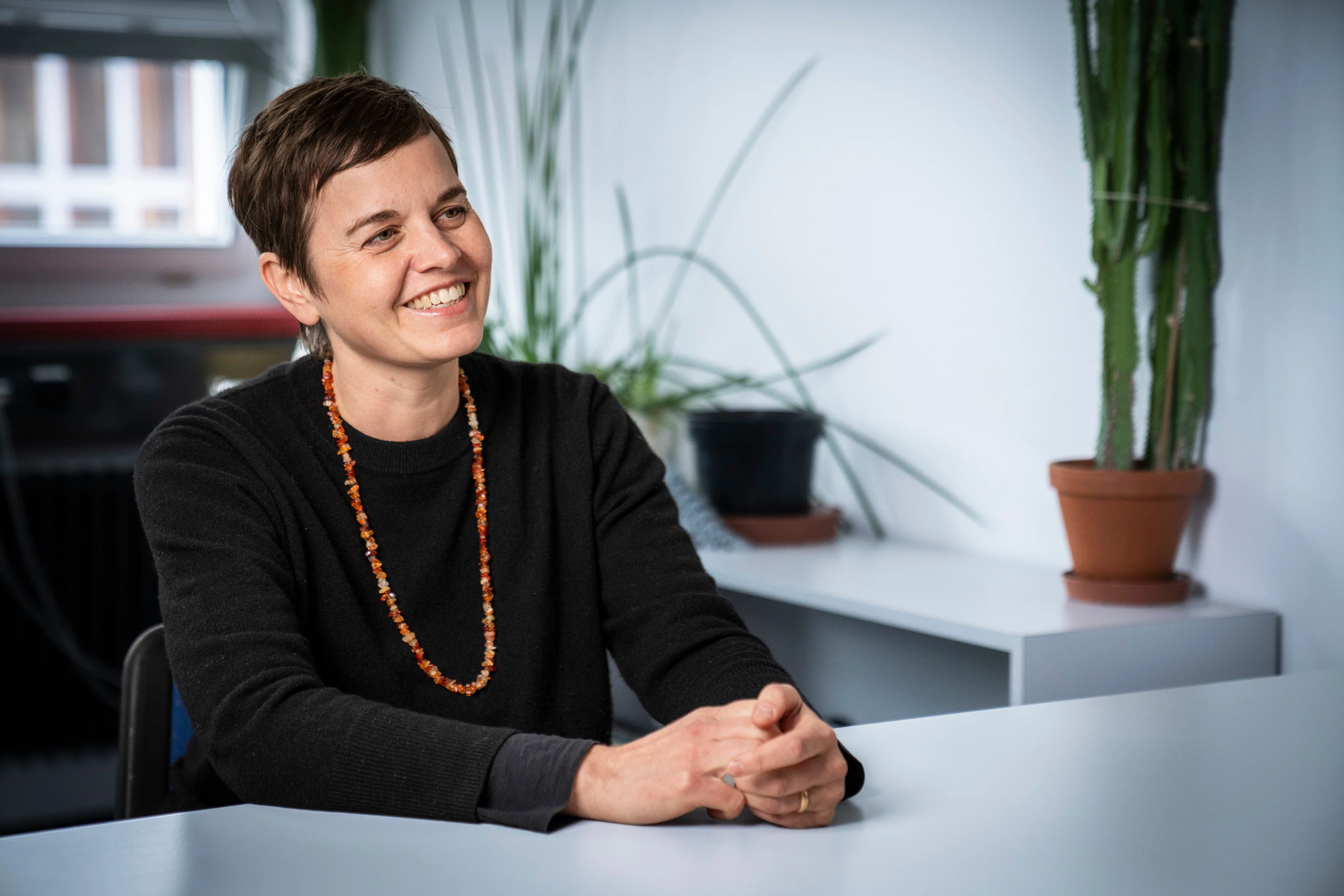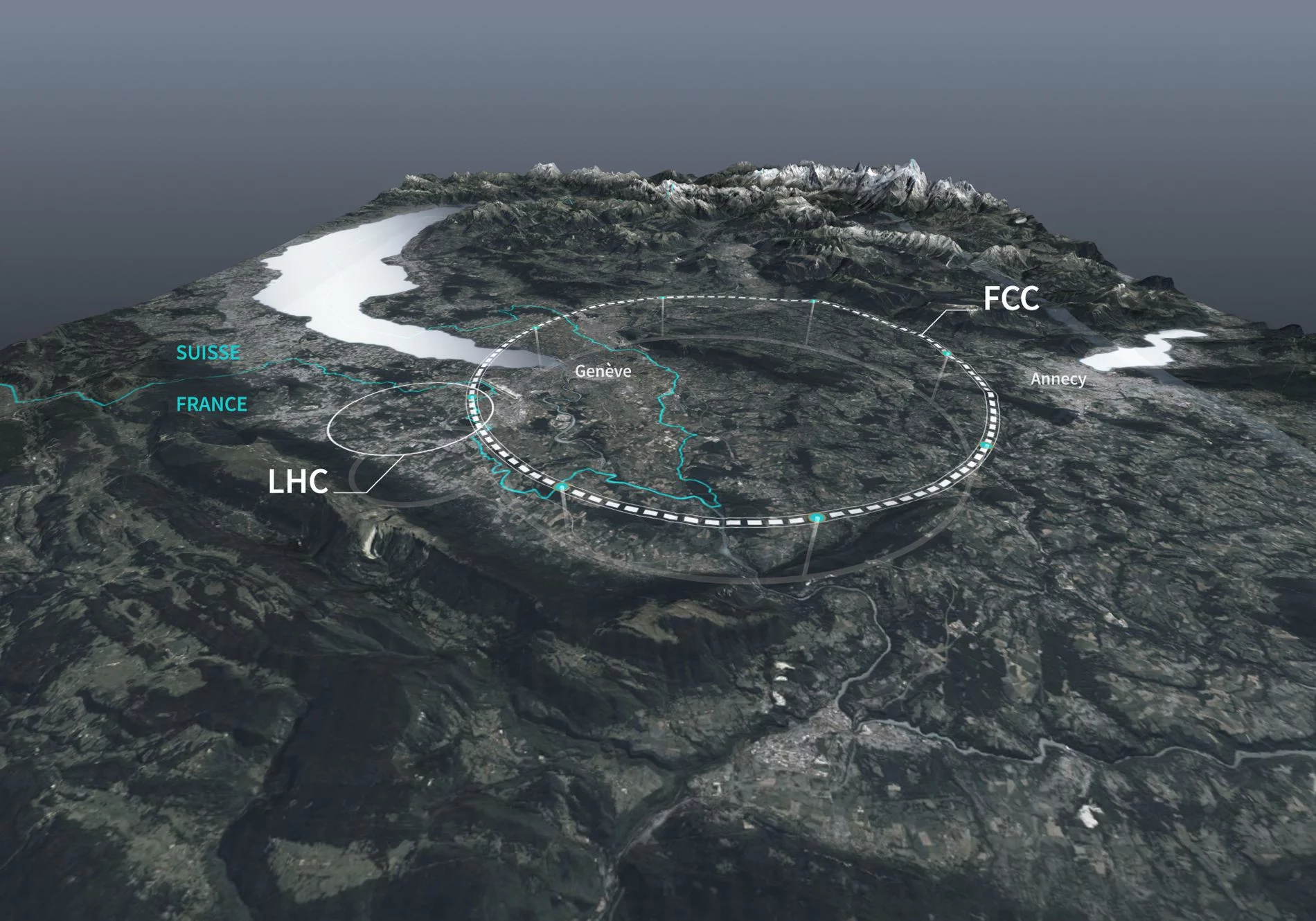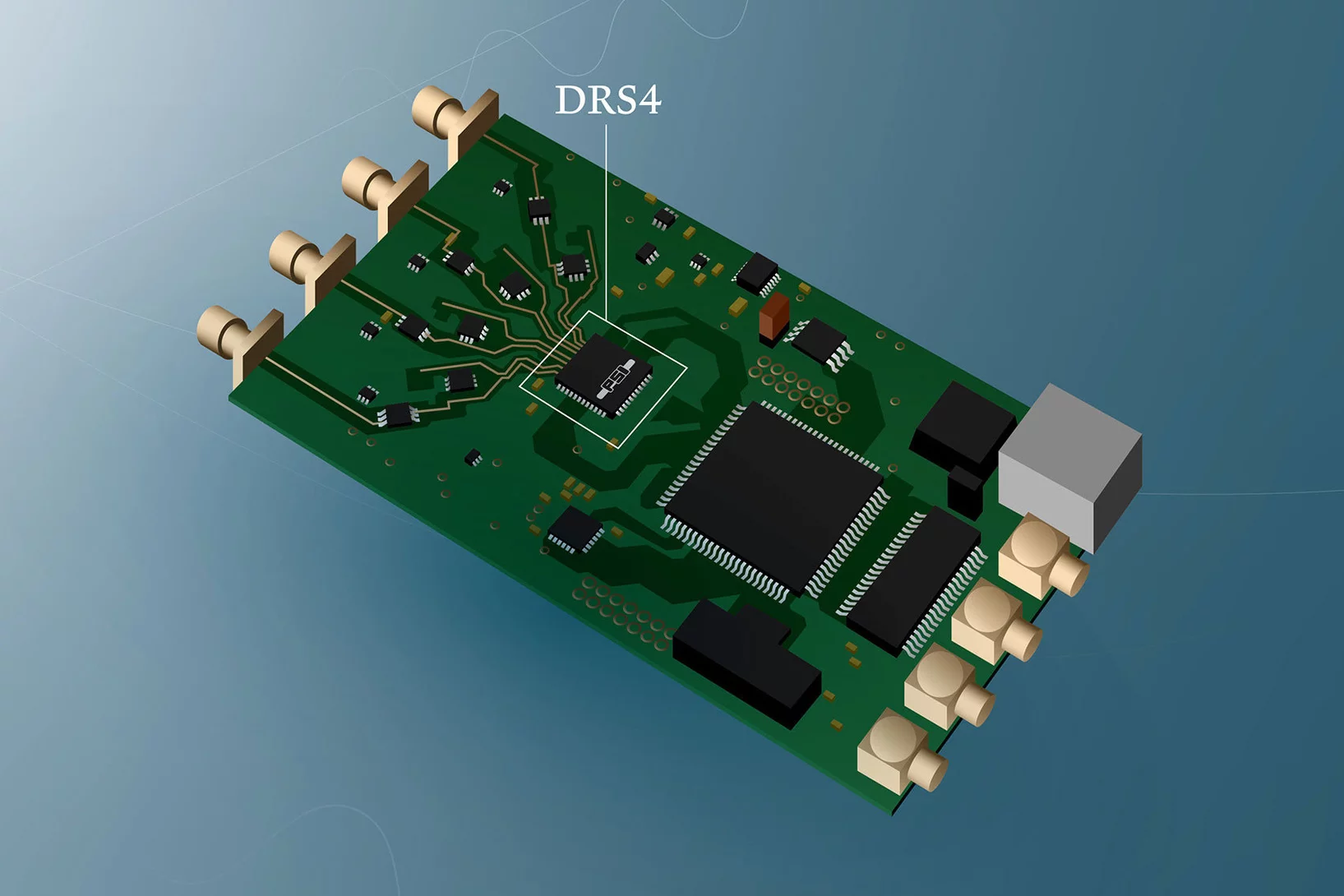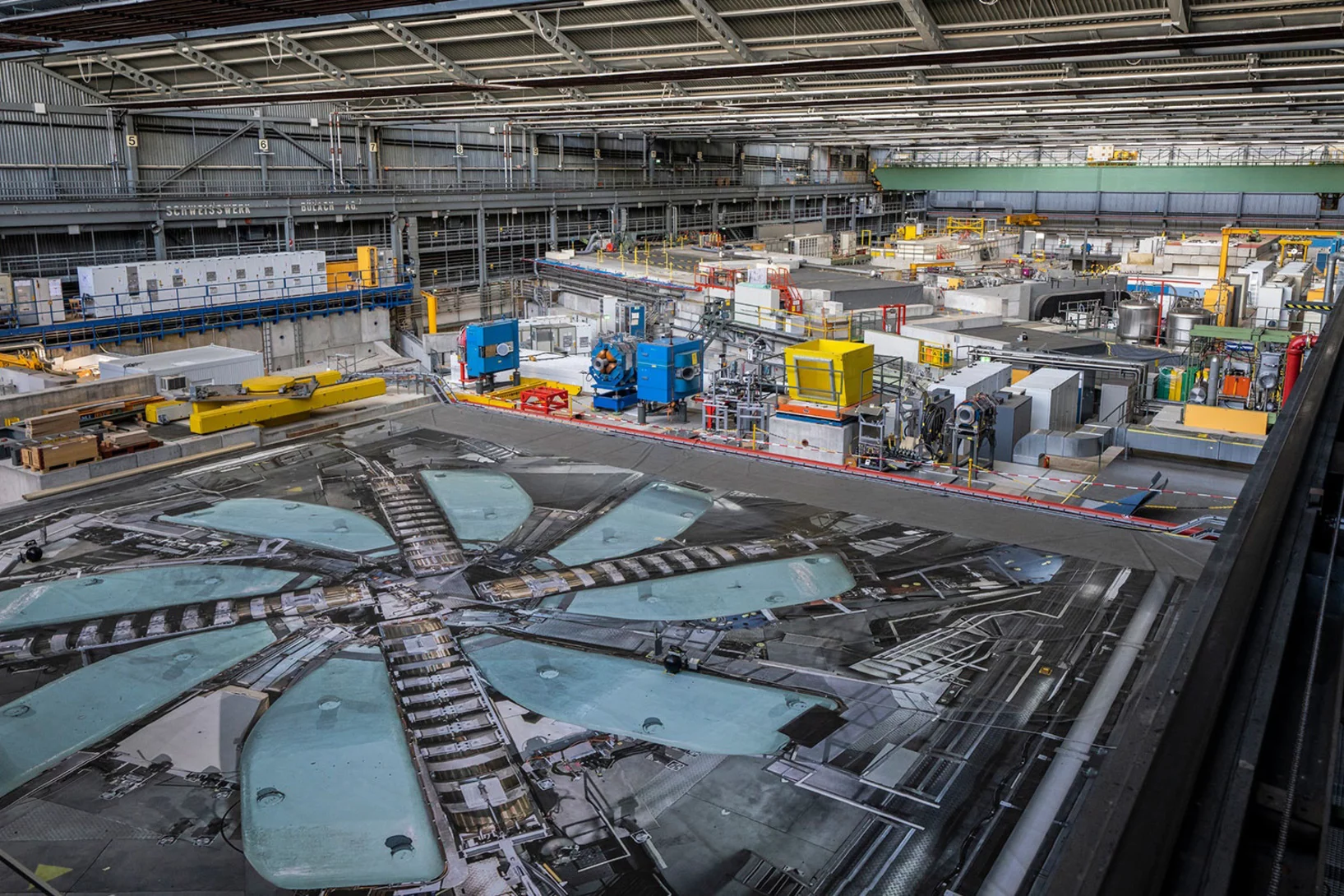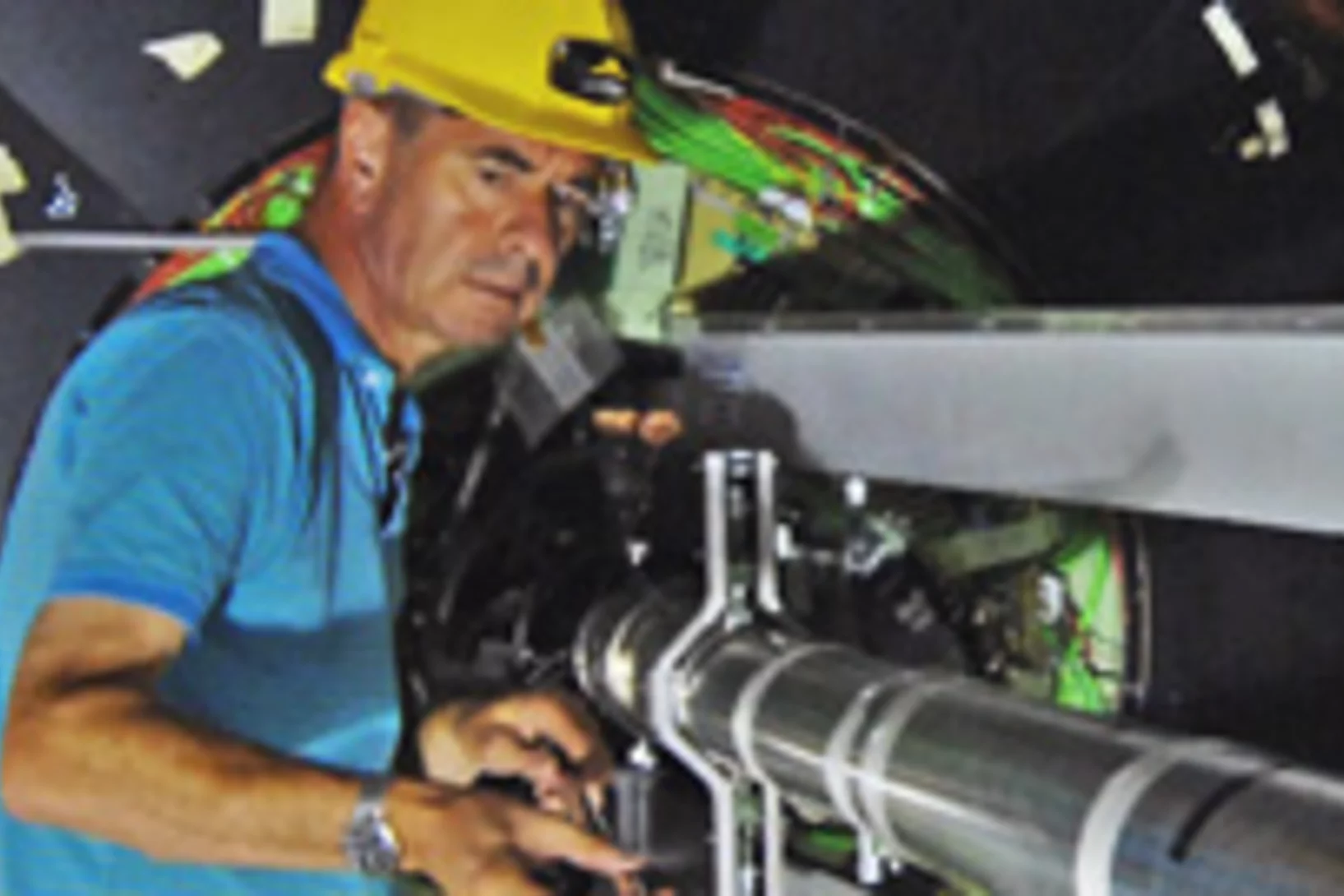At the European Organization for Nuclear Research CERN in Geneva, literally big plans for the future are being forged: The Future Circular Collider (FCC), with a circumference of 91 kilometres, would become the largest machine ever built by human hands. As an important member of the Swiss Institute of Particle Physics, the Paul Scherrer Institute PSIwill participate in this project. Lea Caminada, head of the High Energy Particle Physics Group at PSI, talks about the status of this undertaking.
Ms Caminada, the FCC appears to be feasible. This is the conclusion reached by the interim report of a feasibility study commissioned by the CERN Council. CHIPP speaks of a sense of optimism. There are a lot of acronyms and abbreviations here, which might not mean much to most people in Switzerland. Please explain to us: What is the FCC, who is CHIPP, what was in the interim report – and why is everyone so euphoric?
Lea Caminada: Yes, that needs to be explained. We physicists love acronyms and abbreviations. So: CERN is the European Organization for Nuclear Research in Geneva, which operates the Large Hadron Collider (LHC), which is currently, with its circumference of 27 kilometres, the largest accelerator for research on elementary particles. The top governing body of CERN, the CERN Council, commissioned a feasibility study for an accelerator that would be much bigger still: the Future Circular Collider, FCC for short, with a circumference of 91 kilometres. And CHIPP is the Swiss Institute of Particle Physics. In it, all of the institutions in Switzerland are represented that have something to do with the physics of elementary particles, the building blocks that make up our world. CHIPP coordinates this research in Switzerland, and PSI plays an important role within it.
Now to the feasibility study. The message of the interim report is: The Future Circular Collider (FCC) is feasible; there are no technical or organisational reasons that speak against it. This is by no means a given, and that is why everyone is so euphoric. The FCC would be the largest machine ever built. The tunnel would be 200 metres underground, with part of it running below Lake Geneva. So the challenges would be enormous – but, as the study shows, they can be overcome.
So the FCC would be technically feasible, but also affordable?
As of today, the FCC would cost 15 billion Swiss francs. The planning at CERN involves 150 institutes from 30 countries. The FCC would not go into operation until the mid-2040s. Whether it will be built or not, the coming years will show. There are still other concepts in the running. This feasibility study was commissioned by the CERN Council. It forms the foundation for the future of particle physics. In Europe, deliberations on the strategic direction of particle physics take place in a coordinated manner; the next update is scheduled for 2027. The current priorities of the deliberations are the full exploitation of the scientific potential of the LHC, followed closely by a so-called Higgs factory for research on the Higgs boson as well as the electroweak sector, flavour physics, and top quark physics. The FCC would cover all of these research areas, which is why I believe the project has a good chance.
Fifteen billion Swiss francs is a lot of money. In view of this sum, one must ask: What is the benefit of the FCC?
We can benefit from the FCC on several levels. To begin with, in fundamental research, specifically particle physics: Our Standard Model, which covers all elementary particles and forces, has proven itself very well. But there are gaps. The Standard Model only tells us something about matter, and that’s only four percent of the mass in the universe. What is the big remainder? So far we have only conjectures, questions we cannot answer with existing accelerators such as the LHC. For that we need machines with higher energies.
And are there application-oriented benefits?
For the FCC PSI is developing technologies, including magnets and detectors, that we can also use in other areas, for example here at PSI in the Swiss Light Source SLS 2.0. The FCC requires magnets with a field strength of around 16 Tesla, twice that of the existing LHC magnets. These magnets should be made of high-temperature superconductors that require especially small amounts of energy. This does not exist today on such a large scale but could be interesting for many applications, for example in materials research or in medicine. These technologies are developed in the CHART collaboration (Swiss Accelerator Research and Technology), with participants including EPFL, ETH Zurich, the University of Geneva, and CERN as well as PSI. The development of technologies for the detectors of the new particle accelerator will also spur innovation and enable new applications. One topic is sustainability. The FCC should not consume more energy than the LHC. These are all technologies – some of which do not even exist yet – that could someday be important for industrial applications.
Are there also advantages for the economy and the labour market?
The Swiss economy benefits in any case. Many companies were involved in the construction of the LHC, which created jobs – this is a significant economic factor, especially in the region around Geneva. In addition, institutions such as CERN and PSI train thousands of highly specialised workers in a variety of professional groups – for example in engineering and natural sciences, which a high-tech country like Switzerland urgently needs.
Let’s plunge into the physics a bit. What can the FCC do that the LHC and its predecessor, the LEP accelerator, couldn’t do?
The FCC is really two accelerators in one. The first expansion stage, which could go into operation in the mid-2040s, we call FCC-ee. There we fire electrons and positrons at each other, as was the case previously with the LEP (Large Electron-Positron Collider). However, the energy is much higher: For the LEP, which was in operation at CERN from 1989 to 2000, it was 209 gigaelectron volts; for the FCC-ee, it would be 365 gigaelectronvolts. The more important parameter, however, is luminosity, a measure of the cumulative data statistics in the experiment. In just a few hours, the FCC-ee could accumulate as much data as LEP did during its entire operational life. We could therefore examine the W and Z bosons with great precision – these are elementary particles that transmit the weak interaction, one of the fundamental forces of physics. Since the collision energy at the FCC will be adjustable, we would be able for the first time to produce in large numbers, through electron-positron collisions, the Higgs boson and top quarks, the heaviest elementary particles known to date.
And what would the second expansion stage be?
We call it FCC-hh. This upgrade could go into operation around 2070, in the same tunnel as FCC-ee. It would be a hadron collider in which we fire protons or heavier atomic nuclei at each other; so in that way it is similar to the LHC, but again with much higher energies: 100 teraelectronvolts for FCC-hh instead of the 14 teraelectronvolts that we will achieve with the next expansion stage of the LHC. The Higgs boson can also be produced in large quantities with FCC-ee. FCC-hh is the «discovery machine» that will allow us to search for new, exotic particles in new energy ranges. FCC-ee measures with great precision, because electrons and positrons are elementary particles. However, collisions between protons or heavier atomic nuclei in the FCC-hh would provide data that are harder to interpret but with higher energies. So with the FCC, we can do both.
What will happen before the FCC, possibly, goes into operation?
The study comes to the unanimous conclusion that up to 2040, when the LHC is expected to end, we need to get the most out of that facility. Currently we are in the third operational phase of the LHC. From 2026 to 2028, we are planning an operational pause during which we will upgrade the accelerator and the detectors. This will provide up to ten times more data – so we can see many more particle collisions and test our models with more precision in the fourth operational phase.
As an important member of CHIPP, PSI is one of the drivers of the FCC. What are you and your team currently working on that we might eventually see in the FCC?
Our specialty at PSI is the development of pixel detectors. We are a global leader in this. For example, we developed the pixel detector for the CMS experiment at the LHC – an experiment to study the structure of matter at the highest energies currently available in the laboratory. This detector measures at the site where the collisions take place. You can think of it as a multilayered, super-fast digital camera. To achieve high precision, the pixel detector must be located close to the collision point and must be very thin, so that the resulting particles can fly through it as unhindered as possible. Compared to the LHC, the FCC-ee requires higher accuracy, so we want to build detectors that are thinner and have smaller pixels. To do this, we use technologies that combine sensors and electronics on a wafer, a very thin disc made of semiconductor material, similar to those used as the basis for computer chips. In addition, we want to be able to measure the time when a particle flies through the detector. For this, the clock that synchronises the accelerator and the detector would have to be set to an accuracy of a billionth of a second. The time measurement allows us to determine not only the momentum but also the type of particles.
You are only 42 years old. Nevertheless, after the inauguration of the FCC you would be eligible for retirement. So you most likely will never do research at the FCC yourself. What motivates you to work on this project?
First of all, I am convinced that fundamental research has value. We want to know how the world is put together. This curiosity will give rise to new things. And the long-term nature of the projects makes it important for us to get engaged now. This is also what drives the other 4,000 or so researchers who are working on such a project. Besides that, I find it very exciting to see what I can create, from a drawing on a piece of paper to the largest machine in the world.
Interview: Bernd Müller
© PSI provides image and/or video material free of charge for media coverage of the content of the above text. Use of this material for other purposes is not permitted. This also includes the transfer of the image and video material into databases as well as sale by third parties.
Contact
Prof. Dr. Lea Michaela Caminada
High Energy Particle Physics
+41 56 310 52 34
lea.caminada@psi.ch [German, English]
More articles on this topic
About PSI
The Paul Scherrer Institute PSI develops, builds and operates large, complex research facilities and makes them available to the national and international research community. The institute's own key research priorities are in the fields of future technologies, energy and climate, health innovation and fundamentals of nature. PSI is committed to the training of future generations. Therefore about one quarter of our staff are post-docs, post-graduates or apprentices. Altogether PSI employs 2200 people, thus being the largest research institute in Switzerland. The annual budget amounts to approximately CHF 420 million. PSI is part of the ETH Domain, with the other members being the two Swiss Federal Institutes of Technology, ETH Zurich and EPFL Lausanne, as well as Eawag (Swiss Federal Institute of Aquatic Science and Technology), Empa (Swiss Federal Laboratories for Materials Science and Technology) and WSL (Swiss Federal Institute for Forest, Snow and Landscape Research). (Last updated in June 2023)

